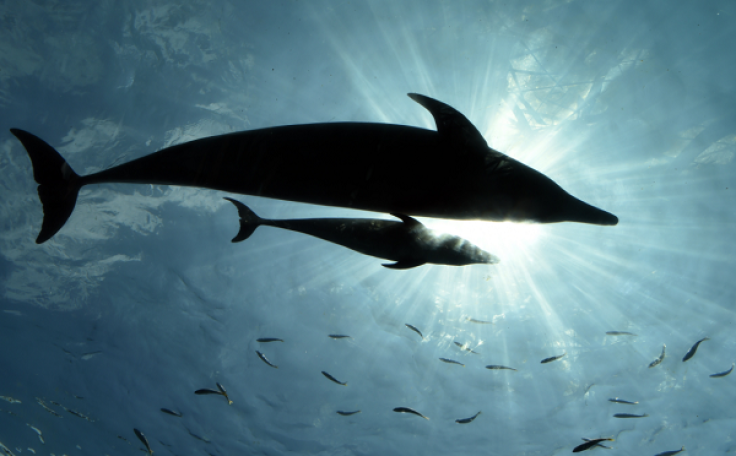Dolphins, Whales Live In Culturally Rich Societies, Have Regional Dialects: Study

A study has emerged linking the complexity of Cetacean culture and social behavior to the size of their brains. Cetaceans is the collective name given to sea-dwelling mammals like dolphins and whales.
The study was a collaboration between scientists at Stanford University, The University of Manchester, The University of British Columbia and The London School of Economics and Political Science (LSE).
The team attempted to prove the already widely-known idea of dolphin intelligence. The researchers attempted to create the largest dataset created to study and document the size of whale and dolphin brains.
The study published in The University Of Manchester’s official website gathered information by studying over 90 different species of dolphins, whales, and porpoises. The findings showed highly complex social groups. They also found overwhelming evidence that suggested that they displayed very co-operative behavior which went as far as searching for lost offspring of group members.
The study successfully linked the societal and cultural characteristics that these sea-dwelling mammals displayed to their large brain sizes and the evolutionary growth of their brain, a process known as encephalization.
The study published a list of behaviors they documented which were very similar to how humans and other primates interact with each other. The list compiles characteristics that point to a very developed cultural and societal structure and is as follows :
- Complex alliance relationships — working together for mutual benefit
- Social transfer of hunting techniques — teaching how to hunt and use tools
- Cooperative hunting
- Complex vocalizations, including regional group dialects which helped them "talk" to each other
- Vocal mimicry and "signature whistles" unique to individuals which served as using "name" recognition for different members in the group
- Interspecific cooperation with humans and other species — working with different species in a co-ordinated hunt
- Alloparenting — looking after youngsters that aren't their own, a characteristic very rare in the animal kingdom.
- Social play
Susanne Shultz, an evolutionary biologist at Manchester's School of Earth and Environmental Sciences, said in the report that the social and cultural interactions between humans led to our colonization of almost every ecosystem we came across. We developed languages, norms and societies with rules to lead a comfortable life. Whales and dolphins were always known for the excellent intelligence they displayed in captivity and in studies, but now we know that their "exceptionally large and anatomically sophisticated brains" have enabled them to create a similar society, underwater.
"That means the apparent co-evolution of brains, social structure and behavioral richness of marine mammals provides a unique and striking parallel to the large brains and hyper-sociality of humans and other primates on land. Unfortunately, they won't ever mimic our great metropolises and technologies because they didn't evolve opposable thumbs," she added.
The data collected was used to study social brain hypothesis (SBH) and cultural brain hypothesis (CBH) in these mammals. These branches of evolutionary development helped explain the large brains that primates and in-extension, humans exhibit. Through the same theory, the team has conclusively said that the large brains seen in dolphins and whales "are an evolutionary response to complex and information-rich social environments. However, this is the first time these hypotheses have been applied to 'intelligent' marine mammals on such a large scale."
© Copyright IBTimes 2024. All rights reserved.











